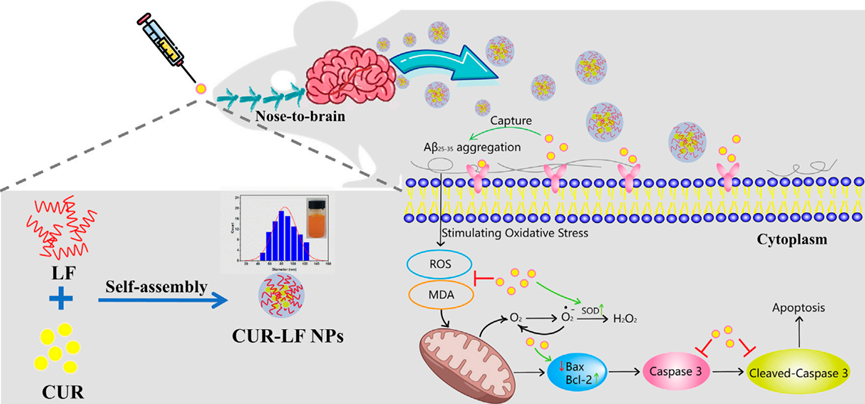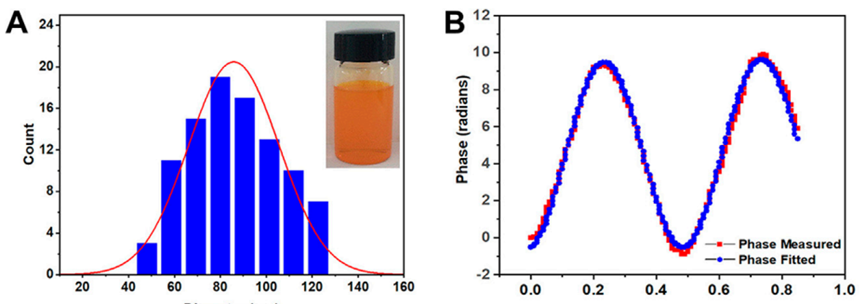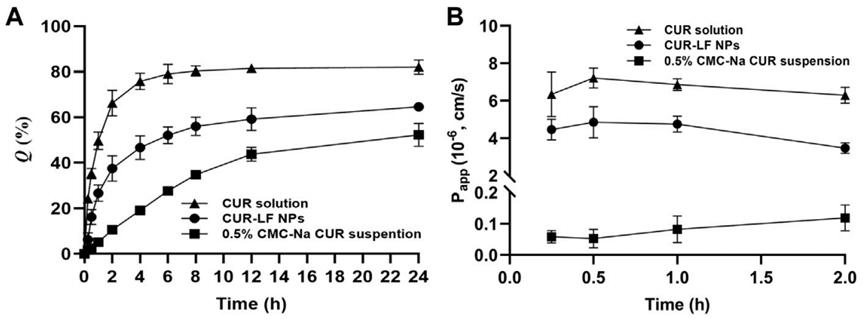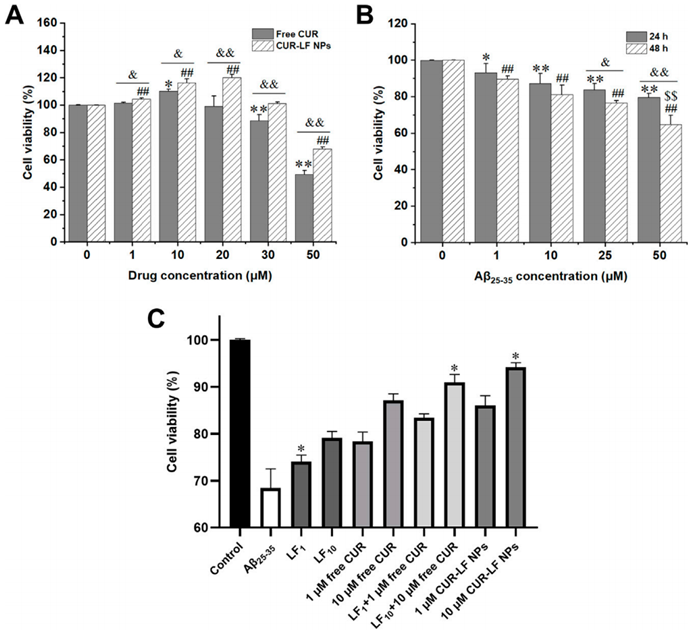Author: Tiffany
Researchers have developed a novel delivery system using curcumin-lactoferrin nanoparticles that significantly improves the neuroprotective effects of curcumin against neurodegenerative diseases.
Key Highlights
- Research Question:
Can curcumin-lactoferrin nanoparticles (CUR-LF NPs) enhance the delivery and neuroprotective effects of curcumin for treating neurodegenerative diseases? - Research Difficulties:
The challenge lies in overcoming the blood-brain barrier (BBB) and ensuring effective delivery of curcumin, which is hydrophobic and has low permeability. - Key Findings:
CUR-LF NPs exhibit a permeability coefficient 50 times higher than curcumin suspension and show significant neuroprotective effects in cell models of nerve damage. - Innovative Aspects:
This study introduces lactoferrin as a multifunctional nanocarrier for direct nose-to-brain delivery of curcumin, enhancing brain accumulation and therapeutic efficacy. - Importance of the Study:
The findings offer a promising new therapeutic strategy for neuroprotection, particularly for diseases like Alzheimer’s, which currently lack effective treatments.
Neurodegeneration and Treatment Challenges
Neurodegenerative diseases, including Alzheimer’s disease (AD), Parkinson’s disease (PD), and Huntington’s disease (HD), represent a growing public health crisis, particularly due to the aging global population. These conditions are marked by progressive neuronal degeneration, leading to significant cognitive and motor impairments, ultimately affecting patients’ quality of life. Current pharmacological interventions predominantly provide symptomatic relief, failing to halt disease progression or address underlying mechanisms. One major hurdle in developing effective treatments is the blood-brain barrier (BBB), which limits the delivery of therapeutic agents to the central nervous system (CNS). Curcumin, a natural polyphenolic compound, has shown promise due to its antioxidant and anti-inflammatory properties, but its clinical application is hampered by poor solubility and low brain bioavailability. Thus, innovative drug delivery systems, such as nanoparticle formulations, are needed to enhance the therapeutic potential of curcumin and facilitate its transport across the BBB for effective neuroprotection.
Research Aim & Objectives
The study, conducted by a team at Chengdu University of Traditional Chinese Medicine and published in Frontiers in Bioengineering and Biotechnology, aims to develop a novel nose-to-brain delivery system utilizing curcumin-lactoferrin nanoparticles (CUR-LF NPs) to enhance the neuroprotective effects of curcumin against neurodegenerative diseases. Specifically, the study seeks to achieve the following objectives:
- Synthesize and characterize curcumin-lactoferrin nanoparticles (CUR-LF NPs) using a desolvation method.
- Evaluate the drug delivery efficiency of CUR-LF NPs across a model of the blood-brain barrier using MDCK cell monolayers.
- Investigate the neuroprotective effects of CUR-LF NPs in vitro, specifically against amyloid-beta-induced neurotoxicity in PC12 cells.
- Assess the pharmacokinetic profile of CUR-LF NPs in vivo following intranasal administration, including brain targeting efficiency and direct transport percentages.
Experimental Design & Findings
Outline of the Experimental Process:
- Synthesis of CUR-LF NPs using a desolvation method.
- Characterization of CUR-LF NPs for size, zeta potential, encapsulation efficiency, and stability.
- In vitro release studies of CUR from CUR-LF NPs and control formulations.
- MDCK monolayer penetration studies to evaluate permeability.
- Cellular uptake studies using PC12 cells for CUR and CUR-LF NPs.
- Cytotoxicity assays to determine safe dose ranges for CUR-LF NPs.
- Evaluation of neuroprotective effects of CUR-LF NPs against Aβ25-35-induced damage in PC12 cells.
- In vivo pharmacokinetic studies involving intranasal and intravenous administration of CUR-LF NPs in rats.

Figure 1. Schematic illustration of the preparation of curcumin-lactoferrin nanoparticles (CUR-LF NPs) and to evaluate the prospective and feasibility for neuroprotection via intranasal administration.
Key Experiments
1. Synthesis and Characterization of CUR-LF NPs
Procedure: CUR-LF NPs were synthesized by adding a curcumin ethanol solution (6 mg/mL) dropwise to a lactoferrin solution (3 mg/mL) under magnetic stirring. The resulting nanoparticles were characterized for size and encapsulation efficiency using HPLC.
Result: The CUR-LF NPs exhibited a mean particle size of 84.8 ± 6.5 nm, a zeta potential of +22.8 ± 4.3 mV, and an encapsulation efficiency of 91.2% ± 3.6%.
New Finding: The successful synthesis of CUR-LF NPs with optimal size and zeta potential suggests their potential suitability for nose-to-brain delivery.

Figure 2. Characterization of CUR-LF NPs.
2. MDCK Monolayer Penetration Studies
Procedure: The permeability of CUR-LF NPs was assessed using MDCK cell monolayers. The apparent permeability coefficient (Papp) was calculated after incubating CUR formulations for 2 hours.
Result: CUR-LF NPs demonstrated a permeability coefficient of 4.36 ± 0.79 × 10−6 cm/s, which was 50 times higher than that of the CUR suspension (0.09 ± 0.04 × 10−6 cm/s).
New Finding: The significantly enhanced permeability of CUR-LF NPs indicates their improved ability to cross cellular barriers compared to free curcumin, emphasizing their potential for effective brain delivery.

Figure 3. In vitro delivery evaluation.
3. Neuroprotective Effects in PC12 Cells
Procedure: PC12 cells were exposed to Aβ25-35 (50 μM) to induce neurotoxicity for 48 hours. Various formulations, including CUR-LF NPs, were then added to assess protective effects.
Result: The treatment group receiving 10 μM CUR-LF NPs exhibited a cell viability of 91.0% ± 1.6% compared to the model group that showed a viability of 68.4% ± 4.1%.
New Finding: CUR-LF NPs significantly protected PC12 cells from Aβ25-35-induced neurotoxicity, demonstrating their potential as a neuroprotective agent in neurodegenerative conditions.

Figure 4. Cell viability assay.
Conclusions and Implications for Future Therapies
This study successfully developed a novel nose-to-brain delivery system utilizing curcumin-lactoferrin nanoparticles (CUR-LF NPs) to enhance the neuroprotective effects of curcumin against neurodegenerative diseases. Key findings include the effective synthesis and characterization of CUR-LF NPs, which exhibited optimal size (84.8 ± 6.5 nm) and high encapsulation efficiency (91.2% ± 3.6%). The nanoparticles demonstrated significantly improved permeability, with a permeability coefficient of 4.36 ± 0.79 × 10−6 cm/s, indicating their enhanced ability to cross the blood-brain barrier compared to free curcumin. Furthermore, CUR-LF NPs showed substantial neuroprotective effects in PC12 cells, with a cell viability of 91.0% ± 1.6% in the presence of Aβ25-35, highlighting their potential as therapeutic agents against neurodegeneration. This research is innovative as it introduces lactoferrin not only as a nanocarrier but also as a targeting ligand, facilitating direct nose-to-brain delivery. The significance of these findings lies in the potential to improve therapeutic strategies for managing neurodegenerative diseases, which currently lack effective treatment options.
Reference:
Li, Linghui, et al. “Nose-to-brain delivery of self-assembled curcumin-lactoferrin nanoparticles: Characterization, neuroprotective effect and in vivo pharmacokinetic study.” Frontiers in Bioengineering and Biotechnology 11 (2023): 1168408.
